Preah Khan of Kampong Svay
A temple of unparalleled dimensions whose glories were for so long shrouded in mystery, inaccessible to all but the most determined — or deranged — of travellers, the magic of Preah Khan of Kampong Svay is now available to all. Or at least all those willing to undertake the 100 kilometre journey from Kompong Thom. These are still few, which means that the chances of being able to explore this astonishing, lushly vegetated site in splendid isolation are very high.
Located just 100 kilometres east of Angkor, on virtually the same latitude, Preah Khan’s first particularity is its orientation, which is on a north-south axis rather than the more customary east-west. Its second is its size. At 25 square kilometres, its scale is unequalled anywhere in Southeast Asia. The monastic complex consists of the enormous five kilometre enclosure walls, the central sanctuary, northern and southern libraries, a huge baray (reservoir) of 2,987 metres by 518 metres with a shrine in the middle, basins and moats.
It has been suggested by some that, alongside Banteay Chhmar just over 100 kilometres to the northwest of Angkor, Preah Khan of Kampong Svay may have been part of a great circular geographical mandala, with the centre turning on the seat of power at the Bayon temple of Angkor. The two sites are connected by a road via Beng Mealea, the original Route 66.
The southeast bank of the baray is flanked by Preah Damrei, a small square ninth century pyramid temple topped by two beautifully carved elephants. The other two are in Phnom Penh and Paris. Indeed a large number of the statues here were removed to Paris by early French explorers as part of the first international collection of Khmer art. More recently, looters have also taken a heavy toll on the site.
In the middle of the baray is Prasat Preak Thkol, an island temple similar to the West Mebon at Angkor, and at the northwestern end of the baray Prasat Preah Stung is best known for its central tower, adorned in the Bayon style with the four faces of King Jayavarman VII or Avalokiteshvara, a bodhisattva embodying the compassion of all buddhas. A magnificent sculptured portrait of King Jayavarman VII was taken from the central sanctuary and can be seen at the National Museum in Phnom Penh.
The 12th century central sanctuary is in ruins, thanks in large part to looters whose greed is matched only by their extreme lack of subtlety, even going so far as to use explosives. Isolation, one of the things that makes this temple so alluring today, is also its greatest vulnerability.
It is nonetheless a beautiful location, still shrouded in lush, cooling vegetation, where your only companions may be a small herd of village banteng, a domesticated species of wild cattle. The central sanctuary is surrounded by a huge moat that is thick with vegetation on one side, though cleared on the other.
As you approach the central shrine, you start along a stone causeway that is reminiscent of the magnificent example at Baphuon. Elevated above the grasses, it must have made for impressive processions in its time. The second enclosure is approached by climbing stairs through the gopura, and you will find yourself in what feels like a meadow, albeit one with lots of stone towers.
There is a path that leads around the central shrine, where offerings are still made. Locals in fact refer to this temple as Prasat Bakan, and King Sihamoni himself came to make offerings here in 2014.
This complex dates back to the 11th century and the reign of Suryavarman I, though it is likely that there were religious structures here before. It is thought that it could have served as a second royal residence outside Angkor during the reign of Suryavarman II, the king who built Angkor Wat, and the man who became King Jayavarman VII likely hid out here during the Cham occupation of Angkor between 1177 and 1181, before he wrested back control of Angkor and the Empire.
He may have built the first of the face-towers that have come to define his architectural style at Angkor Thom and Banteay Chhmar here at Preah Khan. He is responsible for most of the structures that can still be seen at this site today.
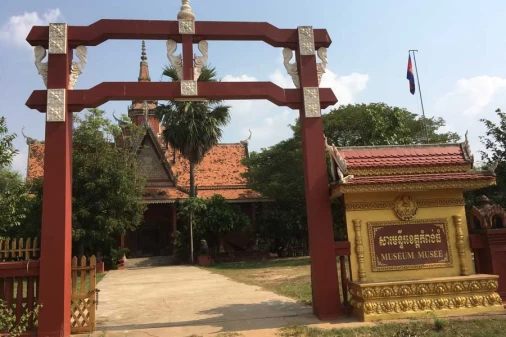
Kompong Thom Museum
This tiny one-room museum was opened in 2010 but is already gathering dust, and if it sees an average...
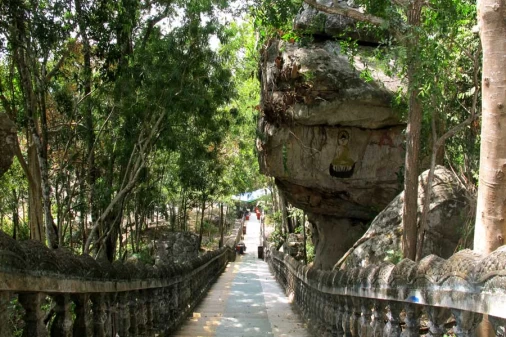
Phnom Santuk (Santuk Mountain)
This hilltop pagoda with an active monastery embodies both the good and bad of modern Cambodian culture....
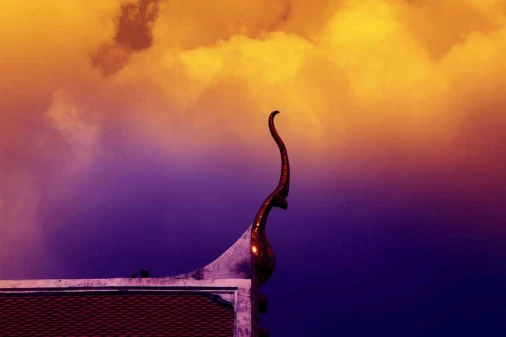
Prasat Andet Temple
Prasat Andet means ‘floating temple’, and it rises up from a small hillock on the flood plains, which...
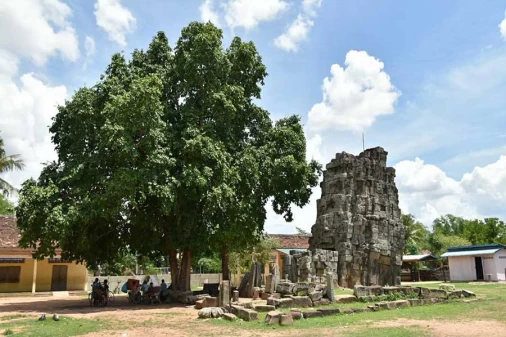
Prasat Kok Rocha
While most provincial Cambodian towns may scrape the bottom of the barrel at times in order to offer...
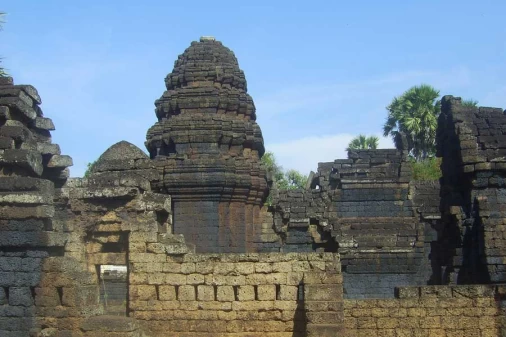
Prasat Kuhak Nokor
Several spelling variations exist for Kuh Nokor, the largest and best-preserved of the province’s temple...
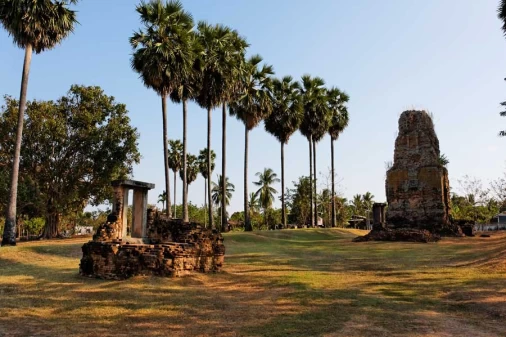
Prasat Phum Prasat and Tnoat Chum
Two smaller temples of note are located in Santuk and Baray districts. Prasat Phum Prasat (or “temple...
You may also like
Absolute Cambodia 14 Days
- Depart Time:Daily
- Starts/Ends:Siem Reap /Phnom Penh
- Tour type:Private Tours
- Travel Style:Nature & Adventure, Heritage Tours, Culture & History
- Activities:Walking tours, Local culture tours, Cultural, religious and historic sites tours, Countryside and village visits tours
- Suitable for:Solo, Family, Group, Couple
- Age range:1 To 90 Years
- Operated in:English, French, Spanish, German, Italian
Cambodia Cities & Southern Coast 12 Days
- Depart Time:Daily
- Starts/Ends:Siem Reap /Phnom Penh
- Tour type:Private Tours
- Travel Style:Heritage Tours, Family Tours, Culture & History
- Activities:Walking tours, Local culture tours, Cultural, religious and historic sites tours, Countryside and village visits tours
- Suitable for:Solo, Family, Group, Couple
- Age range:1 To 90 Years
- Operated in:English, French, Spanish, German, Italian
Cambdodia In Style 10 Days
- Depart Time:Daily
- Starts/Ends:Siem Reap /Phnom Penh
- Tour type:Private Tours
- Travel Style:Family Tours, Culture & History
- Activities:Walking tours, Local culture tours, Cultural, religious and historic sites tours, Countryside and village visits tours
- Suitable for:Solo, Family, Group, Couple
- Age range:1 To 90 Years
- Operated in:English, French, Spanish, German, Italian
 France
France  Spain
Spain  German
German  Italian
Italian 




 Vietnam Tours
Vietnam Tours  Cambodia Tours
Cambodia Tours  Myanmar tours
Myanmar tours  Thailand Tours
Thailand Tours  Laos Tours
Laos Tours